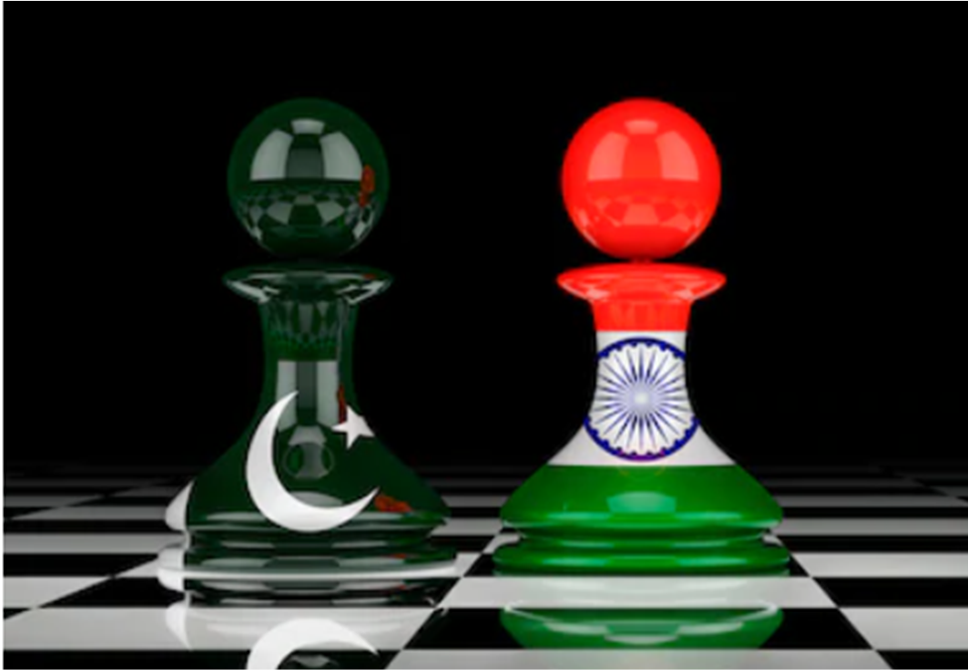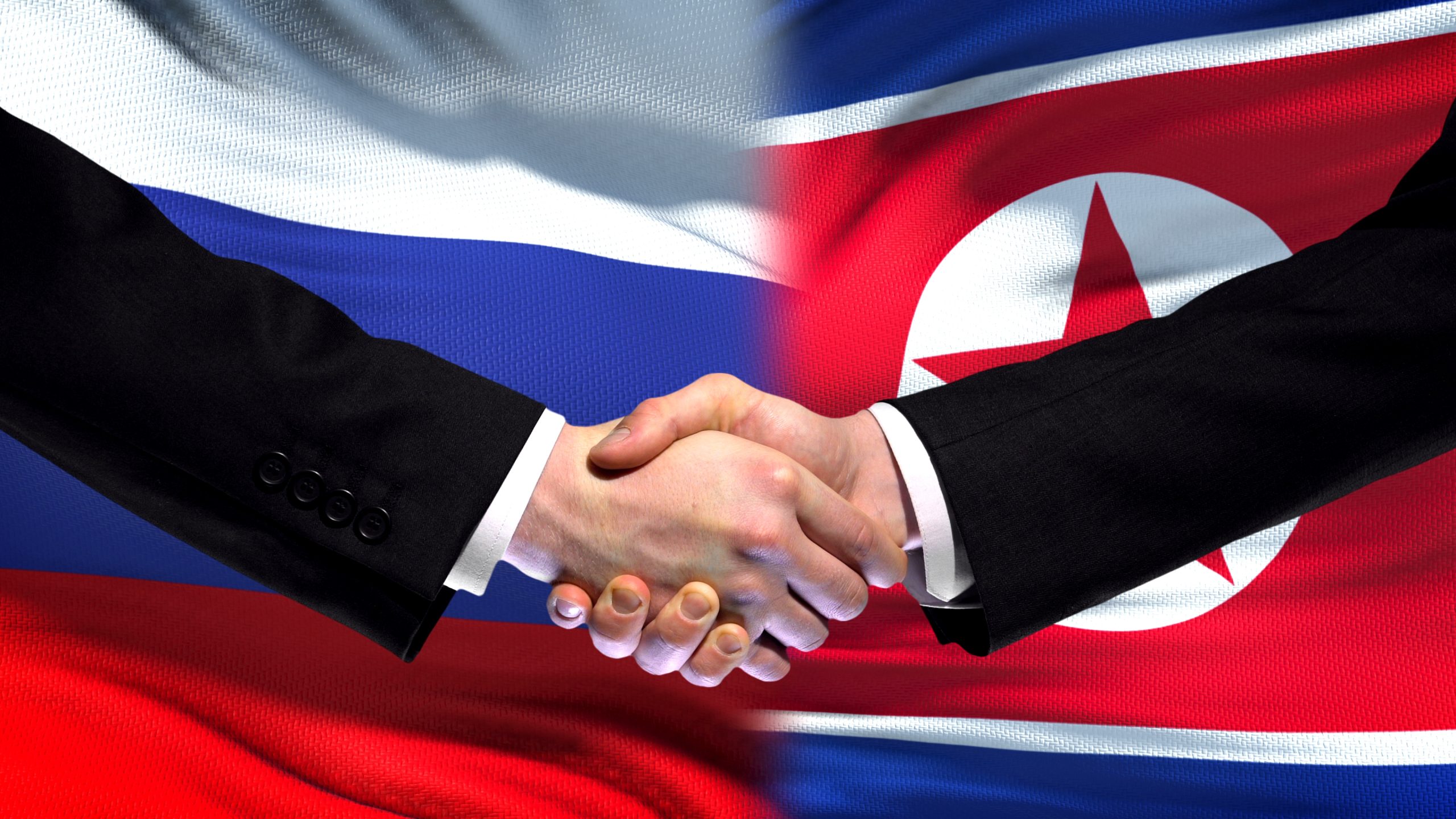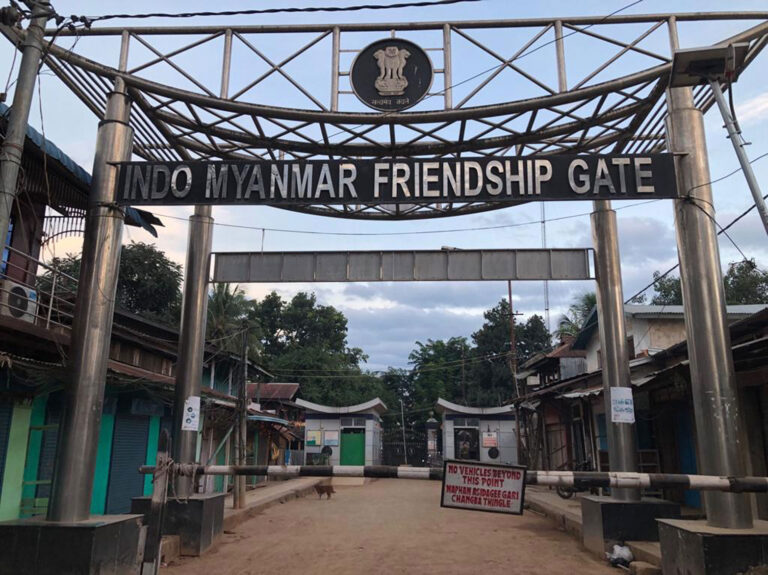
DETERRENCE OPTIONS TO PREVENT PAKISTANS’ CONTINUING PROXY WAR-PART I
Wed, 25 Nov 2020 | Reading Time: 9 minutes

Part 1: Historical Perspective, International and Regional Geo-Political and Security Environment
Introduction: The World is Not a Family
Unlike what our sages wisely proclaimed ‘Vasudaiva Kudumbakam’ (The world is one family), the world today is certainly not behaving like one family, even a dysfunctional one at that. Ironically, the Indian sub-continent which was once an integral whole family, epitomises that even more tragically, especially when it comes to India-Pakistan relations. History, geography, religion and a colonial legacy have weaved such an intricate complex web that it is very difficult to unravel. It’s a long unfortunate story, but Pakistan ever since its independence has waged a proxy war against India irrespective of whether there was a civil government or military rule. The Pakistan Army has always dictated terms using the bogey of hegemonistic India and a national cry for liberating/assimilating Kashmir. India’s policy of strategic restraint has not been able to dissuade Pakistan from engaging in a proxy war against India.
Objective of the Three Part Article
The three-part article aims to holistically examine the options/steps available to India to prevent/dissuade Pakistan from waging a proxy/hybrid war against India. Part 1 deals with the historical ramifications of partition, international and regional security environment including the interventionist role of China, and examines if Pakistan will ever stop waging its proxy/hybrid war. Part II examines the range of both kinetic and non-kinetic options against Pakistan which would impose caution and induce Pakistan to stop. Part III analyses the internal dimension of holistically integrating the UT of JK with India, which arguably is the most pivotal and vital component, to resolve this complex and chronic issue.
Two Nation Theory, Kashmir and Regional Security Zones
Undoubtedly a primary reason for the birth of Pakistan is the oft-quoted ‘Two Nation Theory’. According to this theory, Muslims and Hindus are two separate nations by definition; Muslims have their customs, religion and tradition from social and moral points of view, Muslims are different from Hindus; and therefore, Muslims should be able to have their separate homeland in which Islam is the dominant religion, segregated from Hindus[i],[ii]. Interestingly, it is generally believed in Pakistan and is part of contemporary official Pakistani history, that the movement for Muslim self-awakening and identity was started by Ahmed Sirhindi (1564–1624), who fought against Emperor Akbar’s religious syncretism Din-i-Ilahi movement. This was advocated by the All India Muslim League as the founding principle of the Pakistan Movement. There are varying interpretations of the two-nation theory, based on whether the two postulated nationalities can co-exist in one territory or not, with radically different implications. One interpretation argued for the secession of the Muslim-majority areas of colonial India and saw differences between Hindus and Muslims as irreconcilable. This interpretation nevertheless promised a democratic state where Muslims and non-Muslims would be treated as equals[iii]. A different interpretation holds that a transfer of populations (i.e. the total removal of Hindus from Muslim-majority areas and the total removal of Muslims from Hindu-majority areas) is a desirable step towards a complete separation of two incompatible nations that “cannot coexist in a harmonious relationship”[iv]. A further irreconcilable approach adopted by some influential Pakistani religious scholars is the ‘Gazwa-e-Hind’ theory. Pakistan-based terror groups, notably Jaish-e-Mohammad (JeM), have been using Ghazwa-e-Hind as a Hadith to recruit, fund and justify its audacious terror strikes as a religious holy war against India. The Jaish and others falsely propagate that Jihad against India is considered holy in Islam and that those participating in it [the battle against “infidels”] will be granted an easy entry into paradise[v]. Although this has been rejected by Indian Islamic scholars, there is no gainsaying the fact that this is a huge motivating force in attracting youth to the terrorist cause. This coupled with the ‘raison d’etre’ for Pakistan’s creation and existence, birth pangs of losing Kashmir, with the added insult of the liberation of Bangladesh has created irreconcilable antagonism within Pakistan for India (which is kept alive and exploited by the Pakistan Army, even when the people have realised the treacherous games played by them).
India-Pakistan Relations within a South Asian Regional Security Zone
Regional security zones are fairly independent of globalisation and global political trends due to their strong emotional, geographical, historical and adversarial links. Regional Security Complex Theory[vi] (RSCT) enables one to understand new alliances/structures and to evaluate the relative balance of power, and mutual relationship within it between, regionalising and globalising trends. Currently, only the USA and China, play a truly global game, treating each other as a special class, and projecting their power into far-flung regions. This also explains as to why India-Pakistan adversarial and confrontationist relationships continue with little global intervention and remain largely bilateral. The emerging global power China has in the last decade or so tried to intervene/ dominate the South Asia security sub-zone, changing the status quo, and by irrevocably aligning with Pakistan created instability and volatility in the region. India has to consider the China factor when examining its options against Pakistan. It is also axiomatic that India needs to play the leadership/dominant role in South Asia unequivocally, which it considers as its strategic backyard; as a mandatory stepping stone towards attaining regional power and balancing power status. Just as the USA is fast realising that superpower status is neither a constant nor a given, India too needs to exercise all facets of its Comprehensive National Power (CNP) to dominate and retain leadership in South Asia.
A Multi-Nation, Multi-Domain Approach: An Obvious Narrative
In an emerging multi-polar world, even USA has realised that a collective approach coupled with unilateral actions to engage a stubborn, hard-line, illiberal adversary provides flexibility and options, creating additional pressure points, to induce/force corrective actions on an unrepentant nation/terrorist groups using terror as an instrument of state policy. The span, scope and dimension of security has enlarged in space, time and domains, where both kinetic and non-kinetic systems enjoy equal importance in terms of effect at the objective end. Nations and groups (corporations, institutions and even terrorist groups) are engaged in 360 degrees, 24X7 multi-domain (MD) cooperation, competition, confrontation and if necessary, even conflict if their national objectives are threatened. In other words, in ‘persistent engagement’ to create, maintain and/or expand their strategic space to meet their aspirations. The domains now include strategic PDIME (Political, Diplomatic, Informational, Military, Economic), as also land, sea, sky, space, cyber, information and media, psychological, electromagnetic spectrum, digital networks which can cause physical, moral and psychological neutralisation and destruction. Even non-kinetic (cognitive and non-cognitive) domains can cause physical destruction like cyber-attacks on aviation or logistic networks, or nuclear plants. Information Influence (IIO) and psychological (PSYOPS) operations, along with niche disruptive technologies (AI, nano, hyper-velocity systems) are the trending domains. These will be future game-changers to force change in behaviour of nations, leaders (autocratic) and people of a nation, religion or community. MD operations allow for cross-domain operations (example, army units firing anti-aircraft/anti-ship missiles and rockets, cyber-attacks on weapon systems causing damage/casualties and neutralisation, PSYOPS against leaders both political and military) in complex layers impacting many other domains. No nation (even the USA and China) can be a master of all domains both in time and space. India needs to conduct MD operations against Pakistan and must use its allies and the international community to caution and coerce Pakistan to stop the proxy and hybrid war against India. Both China and Pakistan are conducting 24X7 MD hybrid operations against India, and we need a ‘whole of Nation’ approach to counter it.
Will Pakistan Ever Stop its Proxy/Hybrid War?
It is important to analyse and accept some hard realities and circumstantial rationale. ‘Take back Kashmir’ and hegemonistic India (existential threat to Pakistan) is such a core conviction instilled in the minds of Pakistan Army and a majority of the populace, that it has become indelible. The reasons are numerous and well known and will not be elaborated upon. Will India winning a strategic decisive military victory (possible only when applied multi-domain) stop proxy war? If that happens, the Pak military will likely react in two ways; firstly, a vanquished nation and Army will further encourage proxy war in all its manifestations as the only recourse against a confirmed enemy who has proved their fears correct; second, terrorists/jihadi groups no longer under control of the Pakistan Army will intensify their actions with little regard for the implications on the people or international opinion. Can break up of Pakistan be the answer? Pundits who have long thought about it opine that a fragmented, violent, unstable Pakistan with insecure nuclear weapons will be a greater danger to humanity let alone India. Will an imploding Pakistan be a solution? It may keep the polity and Pak Army busy for a while but essentially the same rationale as above applies.

Moreover, Pakistan is too big to be allowed to implode (over 200 million), and global powers and their allies will not allow it. We must therefore face the reality that Pakistan is highly unlikely to stop the proxy war from being waged against India. The ebb and flow can be controlled, and hopefully to a level that it does not affect India even psychologically. Finally, like all great powers, every inch of land, blade of grass, drop of water, and crystal of snow which is Indian has to be protected at all cost, and India must use its CNP to stop Pakistan from prosecuting a proxy war.
International Opinion and Pressure works up to a Point: Finally, Aatma Nirbharata is the Key
In today’s world of dynamic strategic balancing and shifting alliances, there are no permanent friends. India has been politically and diplomatically highlighting Pakistan’s role in waging a state-sponsored proxy war, and being the hot-bed of terrorism. This has been accepted by the World without exception, with some countries openly agreeing with India while others being silent but supportive. International pressure and funding to Pakistan have waxed and waned with geopolitical events. Pakistan has always managed to stay afloat and many times swim against the tide by exploiting events to its advantage. Many illiberal nations led by China and Iran have learnt the art of conducting hybrid war and achieving their political aims, staying below the red lines of conventional punitive retaliation. Pakistan has mastered the art. International approbation and economic sanctions must remain one of the many verticals which must be constantly applied on Pakistan. As India’s standing rises in the world polity, so will the response from allies and the international community against Pakistan, but ultimately India must accept that it needs to resolve the issue by itself.
The Changing Face of Deterrence[vii]
The traditional/cold war deterrence (mainly nuclear) is no longer effective today, leading to a lot of cynicism about the relevance and even effectiveness of deterrence especially on illiberal/rogue nations and terrorist organisations. Given the tremendous CNP of USA, increasingly many smaller nations from Iran, North Korea, Venezuela, Philippines, Pakistan etc are thumbing their noses at the USA with impunity. Deterrence effect finds it difficult to prevent strategic competition which falls beneath the threshold of traditional military force, allowing these adversaries to make operational gains without tripping the ‘go-to-war’ calculus of the adversary. The expansion of domains for confrontation from space and cyberspace to information and sea bed (energy pipelines and data cables), new capabilities and disruptive technologies are making it harder to accurately gauge the military balance of power. Today, deterrence works better in the strategic and existential plane rather than in the operational and tactical plane. India must rethink its deterrence strategy in the changing geopolitical and strategic environment including the psychology of decision making (after all, leaders/COAS Pakistan will be the final arbiter/decision-maker). Our deterrence capabilities including military have not stopped Pakistan, as he cleverly stays below our perceived red lines of punitive retaliation (frankly, because of lack of ‘deterrence reputation and execution’ too, he indulges in adventurism). However, even with diminishing returns, developing a multi-domain ‘Punitive Deterrence’ against Pakistan becomes a major priority for India.
The China Connection is a Live and Present Danger. The China-Pakistan binding master-client relationship is no secret and needs no elaboration. The launch of China Pakistan Economic Corridor (CPEC) as part of Belt & Roads Initiative (BRI) adds a more intimate and physical dimension to the China-Pakistan-India triangular relations. There is not only physical collusion between China and Pakistan in East Ladakh and the PoK region, but it has also increased the stakes dramatically. BRI is ‘existential’ for the CCP given the current global economic trends, rising aspirations of the Chinese people, internal dissensions, and dependence on external trade for growth and achievement of Xi Jinping’s China Dream. Besides, Pakistan has always been a ‘cat’s paw’ for China. Chinese actions do not stop there, as its increasing interference, intervention and relations with South Asian nations (Myanmar, Nepal, Bangladesh) pose a threat in our strategic backyard, and directly impact our national interests. Our strategy and concept of operations for preventing Pakistan from waging a proxy war MUST factor in the Chinese geopolitical and physical presence in the region. Gradually China-Pakistan joint hybrid operations are getting cemented and India needs to stay ahead of the OODA loop (Observe-Orient-Decide-Act) to counter it, and continuously build our CNP and deterrence capability, of which the military vertical is pivotal. Increasing Chinese PDIME (political, diplomatic, informational, military and economic) interference and belligerence against India, military standoff along the LAC in Eastern Ladakh (one reason being a threat to CPEC), China’s continued intransigence on the boundary question where it does not recognize Indian sovereignty over Arunachal Pradesh and even UT of Ladakh are portents of the future and indicate a ‘clear and present danger’. China is increasingly sensitive to our MD reforms (especially infrastructure development along the border areas) in UT of JK and Ladakh and will support Pakistan both in moral and material terms and its hybrid war. India too must pull out its stops. India need not act in isolation due to the asymmetry in CNP, but must strongly join the chorus on the mistreatment of Uighur Muslims, hegemonistic actions in the East and South China seas, and Taiwan. We must support the voices questioning the One China Policy, examine seriously calls for the autonomy to Xinjiang and Tibet and highlight debt trap enticements to nations as part of BRI. Above all, we must resolutely stand firm on the LAC.
(In Part II options to ‘Tame Pakistan’, and in Part III the radical steps necessary for ‘Final Integration’ of UT of J&K with ‘New India’ will be examined.)
References
[i] ‘Challenges and Opportunities in Global Approaches to Education’, IGI Global, 2019. pg 58, Indian Partition of 1947 was a significant communal segregation in the world’s history following a huge mass migration. Based on Jinnah’s
[ii] [ii]Liaquat Ali Khan (1940), Pakistan: The Heart of Asia, Thacker & Co. Ltd.
[iii] Carlo Caldarola (1982), Religions and Societies, Asia and the Middle East, Walter de Gruyter, p. 262-263, They simply advocated a democratic state in which all citizens, Muslims and non-Muslims alike, would enjoy equal rights.
[iv] S. Harman (1977), Plight of Muslims in India, DL Publications and M. M. Sankhdher (1992), Secularism in India, dilemmas and challenges, Deep & Deep Publication
[v] https://www.orfonline.org/research/complex-narratives-ghazwa-e-hind-56257/
[vi] Relations Regions and Powers; The Structure of International Security; Cambridge Studies International, Barry Buzan and Ole Wæver, CAMBRIDGE; www.cambridge.org/9780521814126
[vii] Paraphrased from my article on Deterrence; ‘Strategic and Operational Deterrence in Indian Context: Multi-Domain Warfare’; CENJOWS SYNERGY Magazine, Jun 2019
Disclaimer
The opinions expressed in this article are the author’s own and do not reflect the views of Chanakya Forum. All information provided in this article including timeliness, completeness, accuracy, suitability or validity of information referenced therein, is the sole responsibility of the author. www.chanakyaforum.com does not assume any responsibility for the same.
Chanakya Forum is now on . Click here to join our channel (@ChanakyaForum) and stay updated with the latest headlines and articles.
Important
We work round the clock to bring you the finest articles and updates from around the world. There is a team that works tirelessly to ensure that you have a seamless reading experience. But all this costs money. Please support us so that we keep doing what we do best. Happy Reading
Support Us




















POST COMMENTS (2)
Lt Gen PR Kumar (Retd)
Swapneel Naidu